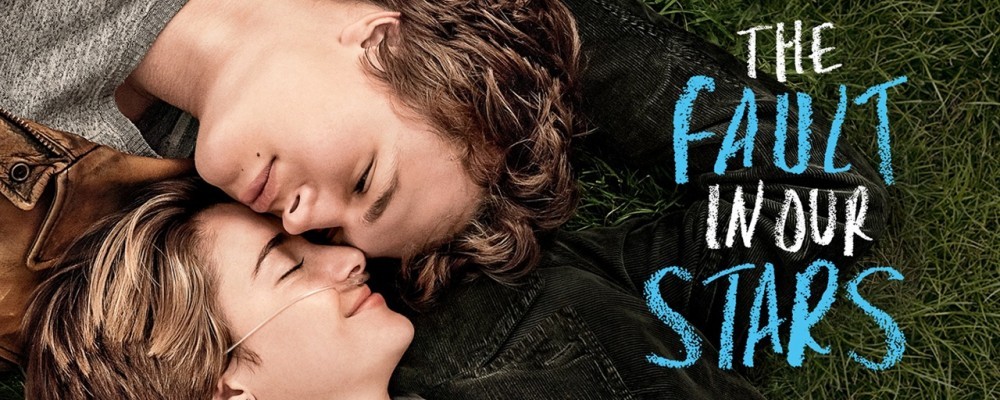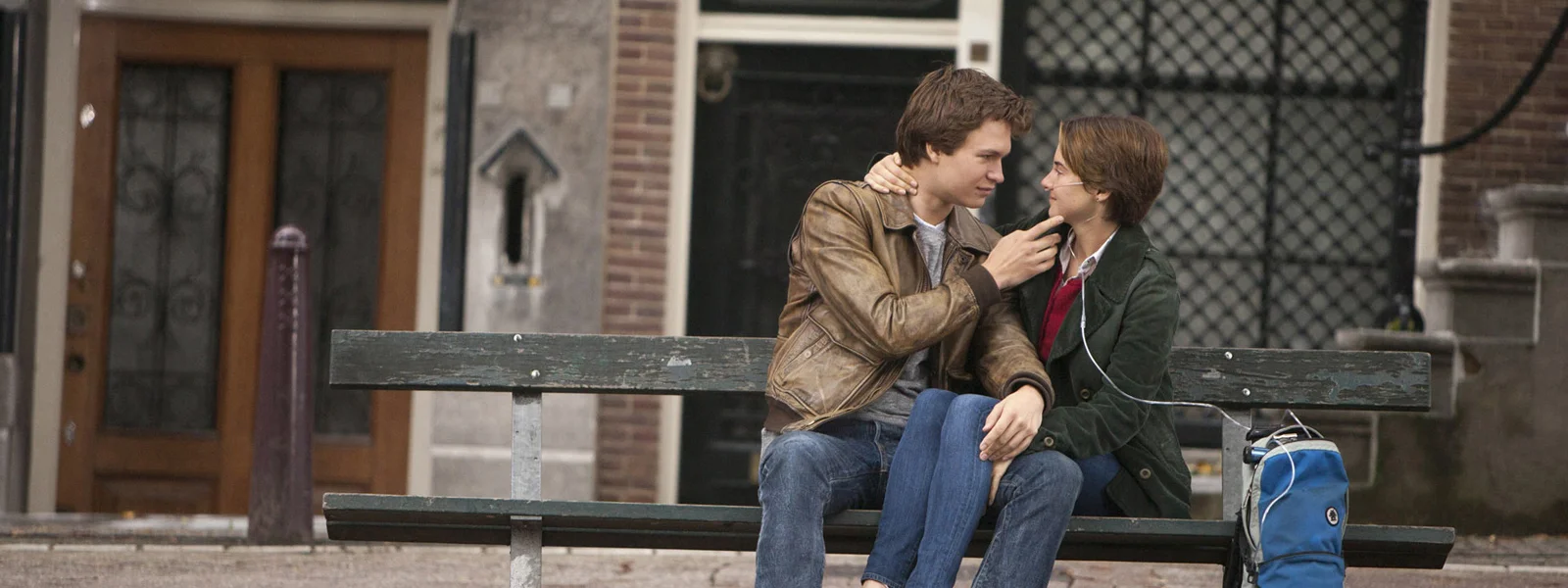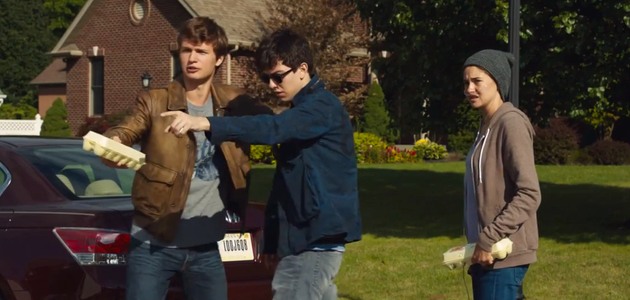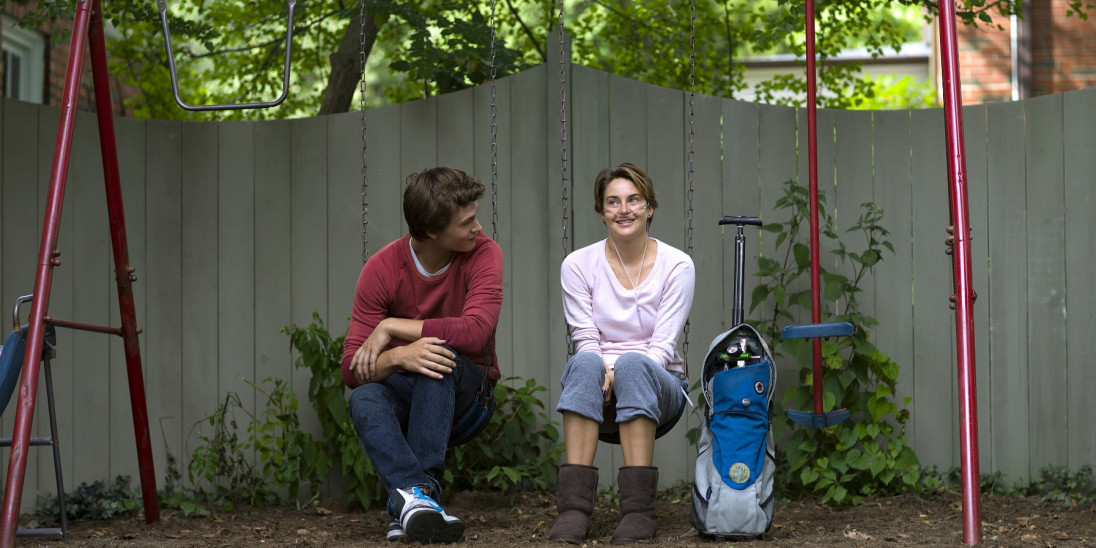The Fault in Our Stars (2014)

The Fault in Our Stars (2014), directed by Josh Boone, is a touching and emotional film adaptation of John Green’s best-selling novel. The story follows Hazel Grace Lancaster (Shailene Woodley), a 16-year-old girl battling terminal cancer, and Augustus Waters (Ansel Elgort), a charming and witty cancer survivor. The two meet at a cancer support group, where their unlikely friendship turns into a profound and transformative love story.
Hazel, whose thyroid cancer has spread to her lungs, lives a life largely isolated from her peers. She depends on an oxygen tank to help her breathe and is often preoccupied with the limitations of her condition. Her mother, played by Laura Dern, encourages Hazel to attend a cancer support group in the hopes of giving her more social interaction, but Hazel remains reluctant. It’s here that she meets Gus, a confident and optimistic young man who has been in remission from osteosarcoma, a form of bone cancer. Despite their initial differences, the two bond over their shared experience of illness and a mutual love for literature, particularly a book called An Imperial Affliction by the mysterious author Peter Van Houten.
Gus, with his charming personality and irreverent sense of humor, convinces Hazel to open up to him, and their connection grows deeper. Although Hazel is hesitant to get too close, fearing the pain of loss, Gus’s persistence and wit eventually melt her defenses. Together, they form a unique and intense bond, finding solace and joy in each other’s company. Gus, who has a prosthetic leg due to his cancer treatment, refuses to let his illness define him, which contrasts with Hazel’s more cautious and reserved approach to life. Their relationship is full of witty banter, emotional vulnerability, and profound conversations about life, death, and the meaning of existence.
A central part of their bond is their shared love of books. Hazel’s favorite, An Imperial Affliction, is a novel that deeply resonates with her because of its portrayal of a young girl with cancer. When the book ends abruptly, Hazel is left with unresolved questions about the characters’ fates. Gus, wanting to bring Hazel joy, arranges a trip to Amsterdam to meet the book’s reclusive author, Peter Van Houten, hoping he will offer answers to the book’s open-ended conclusion. However, their meeting with Van Houten, played by Willem Dafoe, turns out to be a disillusioning experience. Van Houten, bitter and drunk, refuses to provide any closure, leading to a painful confrontation. Despite this, the trip to Amsterdam allows Hazel and Gus to confront their fears and deepen their emotional connection.
The film is not just about their romantic relationship, but also about the way they both come to terms with their illness and the impermanence of life. Hazel struggles with the idea that she is not living a “normal” life, and she grapples with feelings of guilt about the impact her illness has on her parents, particularly her mother. Gus, on the other hand, is more focused on living life to the fullest, even though he knows his own time is limited. As their relationship develops, Hazel learns to accept that love and loss are inseparable parts of life, and Gus’s fearless embrace of life’s fleeting nature helps her realize that there is beauty in even the briefest of experiences.
The film’s pacing is measured, allowing time for the emotional depth of the characters’ journey to unfold. It balances moments of humor, tenderness, and heartbreak, making the story all the more impactful. Shailene Woodley delivers an extraordinary performance as Hazel, portraying her intelligence, wit, and vulnerability with grace. She perfectly captures the complexity of a young woman coming to terms with her illness while learning to open herself to love. Ansel Elgort’s portrayal of Gus is equally compelling—he brings both charm and vulnerability to the character, making Gus’s optimism and eventual grief deeply moving.
The chemistry between Woodley and Elgort is palpable, and their performances create an authentic and relatable portrayal of young love. Their relationship feels genuine, full of both lighthearted moments and profound emotional depth. As the story progresses, the audience becomes deeply invested in their journey, knowing that their love, like all things in life, is impermanent.

Visually, the film is beautifully shot, with cinematographer David Lanzenberg using soft lighting and a muted color palette to reflect the emotional tone of the story. The film’s setting, particularly the picturesque landscapes of Amsterdam, adds a sense of dreaminess to the narrative, providing both a metaphor for the characters’ fleeting time together and a stark contrast to the realities they face back home.
The film also delves into themes of legacy and the search for meaning in the face of mortality. As Hazel and Gus grapple with their illness, they also question their place in the world and the impact they will leave behind. There’s a poignant moment in the film where Hazel expresses her fear of not leaving anything behind, of being forgotten, a common feeling for those dealing with terminal illness. Gus, however, reassures her that their love and their experiences together are enough to make their lives meaningful.

The story of The Fault in Our Stars is ultimately about the way love, even in its briefest form, can transform lives and make even the hardest moments worth living. It asks the audience to appreciate the beauty in life’s fragility, to cherish the time we have, and to love without regret or fear of loss. Despite the overwhelming sadness of the story, there is an undeniable sense of hope that pervades the film—a hope that, even in the face of illness and death, life still holds meaning, love is worth pursuing, and every moment is precious.
In conclusion, The Fault in Our Stars is an emotionally powerful film about love, loss, and the meaning of life, anchored by two outstanding performances from Shailene Woodley and Ansel Elgort. It captures the complexity of young love, the reality of illness, and the beauty of living fully in the face of adversity. The film is a bittersweet exploration of the way love and relationships shape us, even in the most difficult circumstances. It is a reminder that, while life may be fleeting, the connections we make with others leave a lasting impact.











